This labneh dip with olives is our go-to for slow Fridays, mezze spreads, and memories that start with yogurt and end with warm bread.

Jump to:
Fridays in our house are a quiet kind of chaos.
The kids come home sticky from preschool snacks and playground adventures, cheeks pink from chasing each other in the sun. Leo immediately kicks off his shoes, asking for toast with “the soft cheese,” and Lin is usually halfway through a banana before I’ve even shut the door behind us. My husband’s laptop clicks closed in the corner, and suddenly, the house is humming with that familiar pre-Shabbat rhythm. Even if we don’t fully observe, even if dinner is still hours away.
That’s when I usually reach for the labneh.
It starts with a tub of plain Greek yogurt and a colander lined with cloth. Nothing fancy. But as it drains in the fridge, something shifts. The yogurt thickens, firms, settles into itself. Just like we do.
My mother used to keep a container of labneh on the top shelf of the fridge, nestled between jars of pickles and the bottle of pomegranate molasses that never seemed to run out. She’d spread it thick on slices of fresh bread, drizzle it with oil, and top it with za’atar, maybe some pickled turnips if they were on hand. It wasn’t something she made from scratch, but it always felt homemade, especially when her hands were the ones scooping it onto the plate.
Taught by Taste, Remembered by Heart
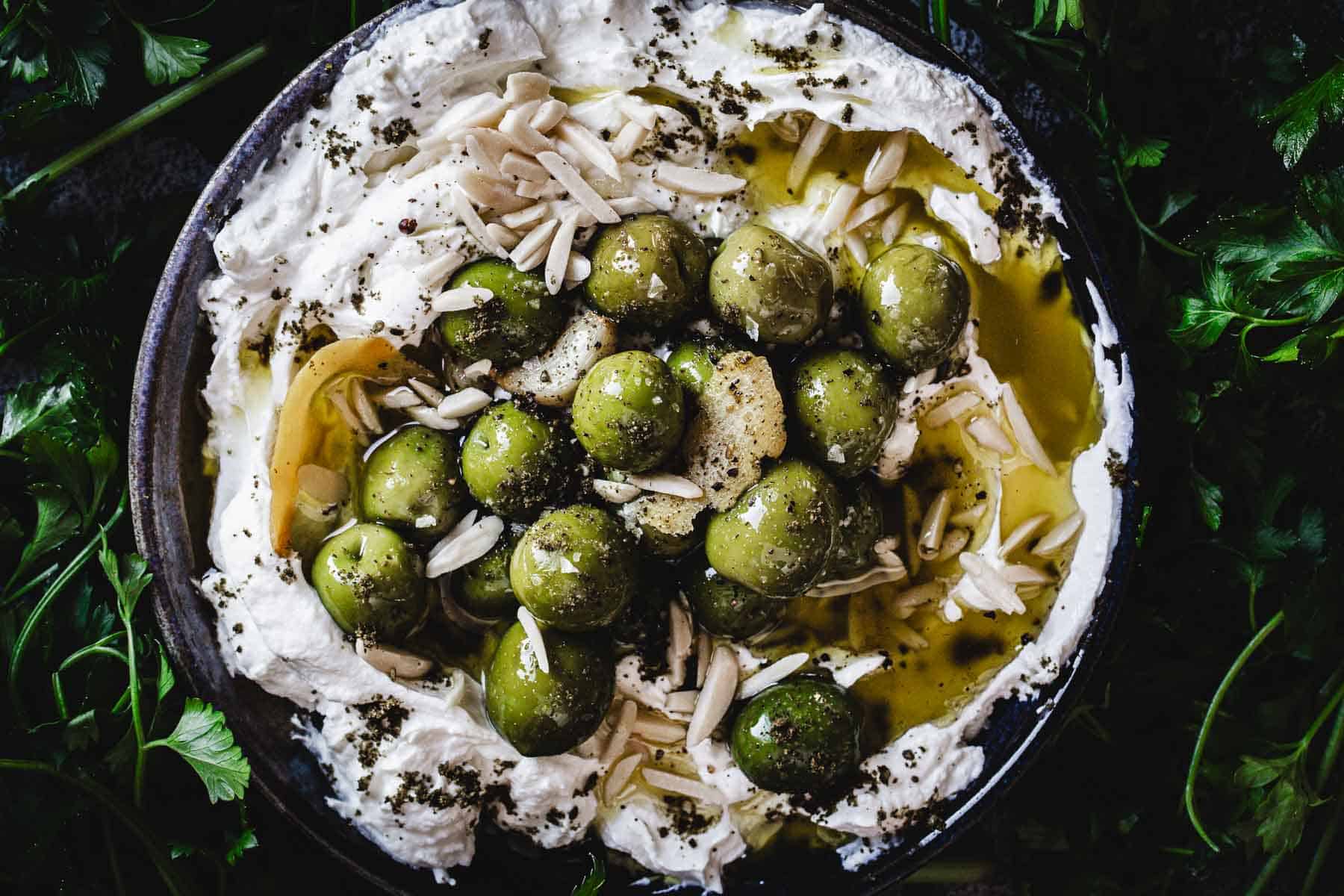
I didn’t start making my own labneh until after Leo was born. I was craving that taste of home, the soft tang, the creaminess, but none of the store-bought tubs tasted quite right. So I dug out an old cheesecloth, poured the yogurt in, salted it like I remembered, and left it to drain.
The next day, when I peeled the cloth away and tasted a spoonful, I could feel my mother’s kitchen again. The worn linoleum floor. The smell of cumin and lemon peel. Her voice calling me to come taste something new, even if it was the same thing we always ate.
Now, I make labneh almost every week. And this version, topped with warm Castelvetrano olives and infused lemon-garlic oil, is the one that seems to stick. Maybe it’s the way the lemon zest perfumes the oil, or how the almonds crackle against the creamy yogurt. Maybe it’s the quiet moment I get while stirring the olives on the stove, before the questions and messes of dinner begin.
Or maybe it’s because this dish feels like a little bridge. Between my mother’s kitchen and mine, between our family and the one we’re building, one messy, beautiful day at a time.
Anchored by Bread, Memory, and Little Hands
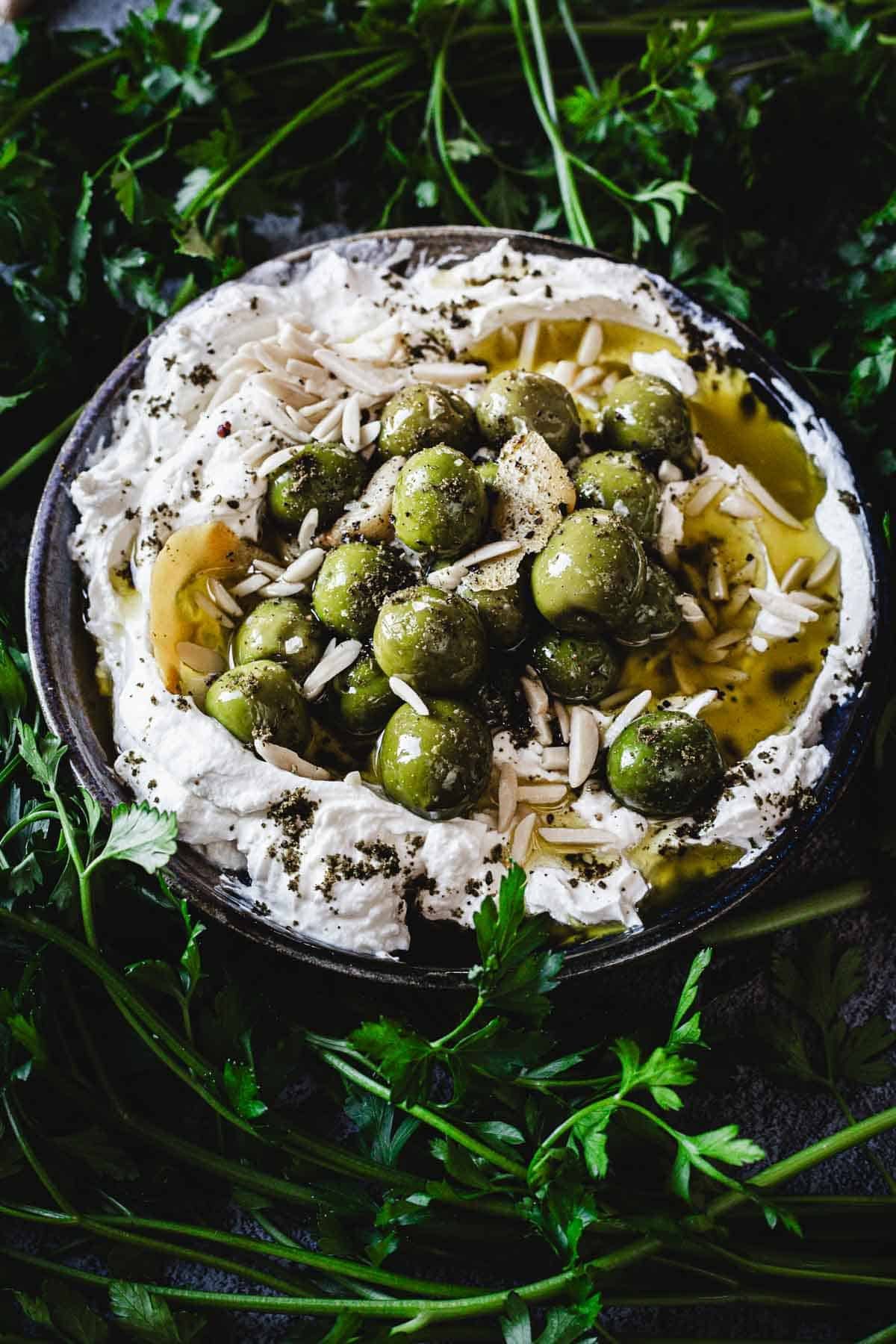
When I serve this labneh dip with a thick hunk of rosemary sourdough bread, it’s never just a dip. It’s part of a spread, laid out on the counter while the kids clamor for bites, my husband slices meat or grills outside, and I slip olives into Lin’s mouth while she hums.
Some days I serve it alongside turkey kofta, tucked into sandwiches with pickled onions and herbs. Other times, it’s part of a mezze-style lunch, with our goat cheese salad on one plate and strips of vegan shawarma nestled in another.
There’s something about labneh that makes it feel right in any of those settings. It’s not showy. It doesn’t try to be the centerpiece. But it’s always there, always dependable, and always eaten until the last streak is wiped clean with a crust of bread.
And when I’m in the mood for something on the sweeter side, I’ll make a cousin to this dip, my berry labneh with infused olive oil, served as breakfast or dessert, depending on the mood. It uses the same base, just transformed. That’s the beauty of labneh: it bends to whatever the moment needs.
But this labneh dip with warmed olives? This is the one I bring out when I want something salty, rich, and grounding. Something that tastes like after-school Fridays and before-dinner pauses. A dish I can make ahead while the yogurt drains overnight and the oil steeps on the stove.
Something that feels like home.
Ingredients

- Greek Yogurt - This is the heart of labneh. I use full-fat plain Greek yogurt for its richness and thick consistency, it makes a labneh that spreads easily but holds its shape. You can substitute with plain Balkan-style yogurt, but the texture won’t be quite as firm.
- Castelvetrano Olives- These olives are mild, buttery, and tender, perfect for those (like my kids) who aren’t always fans of stronger brines. They take well to gentle warming and soak up the lemony oil without losing their character. If you can’t find Castelvetrano, go for green olives that are less sharp, like manzanilla.
- Sliced Almonds - Toasted lightly, almonds add just enough crunch to offset the creaminess of the labneh. I used to skip this step, but after one dinner where everything on the plate was soft, I realized it needed contrast. Walnuts could work in a pinch, but almonds bring a subtle sweetness I’ve grown to love here.
- Za’atar - A dusting of za’atar connects this dish to its Levantine roots. It’s earthy, slightly tangy, and aromatic,what my mom would call “the taste of weekends.” If you don’t have za’atar, you can mix dried thyme with sesame seeds and a pinch of sumac, but nothing quite compares to the real thing.
See the recipe card below for full list and exact quantities.
How to Make Labneh Dip with Warmed Olives

This labneh dip with warmed olives comes together in two calm, unhurried steps: straining the yogurt overnight until thick and lush, and gently warming olives in lemon-garlic oil until they shine. It’s simple enough for a weekday afternoon, but grounding enough to carry a table of mezze.
Strain the Yogurt
Line a mesh strainer with two layers of cheesecloth and set it over a deep bowl. Scoop in the Greek yogurt and sprinkle the salt across the top. Fold the edges of the cheesecloth over the yogurt, then cover loosely with plastic wrap. Let it rest in the refrigerator for 8 to 12 hours. As it drains, the yogurt thickens into a rich, tangy labneh.
Infuse the Oil
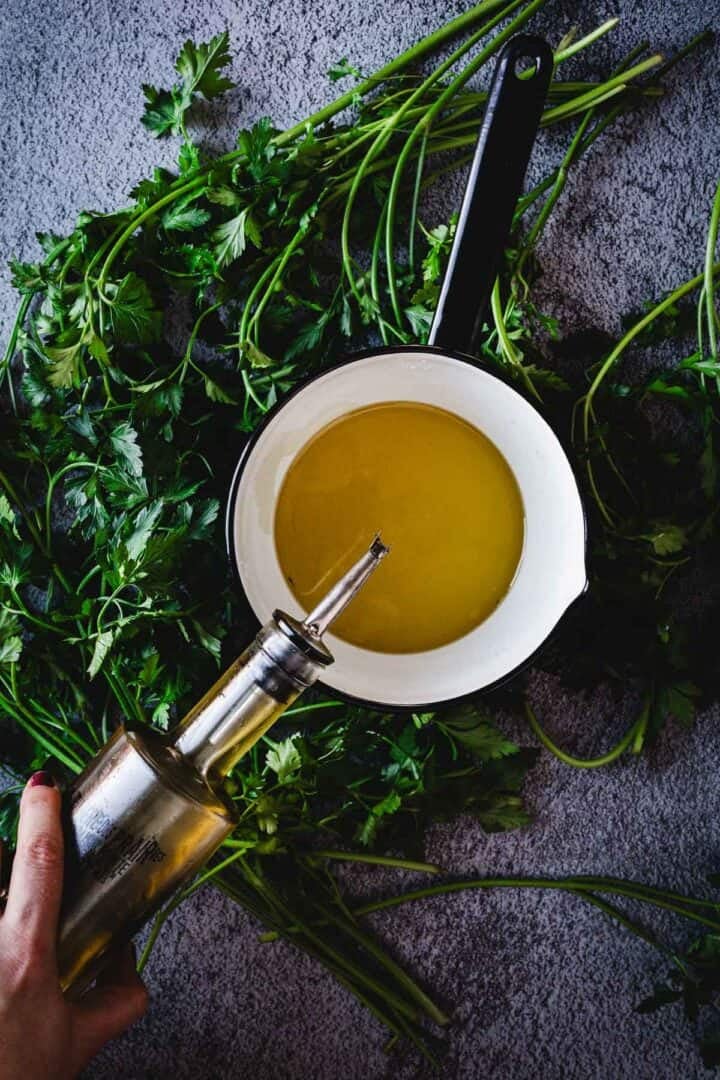

In a small skillet over medium heat, pour in the olive oil. Add the lightly crushed garlic and strips of lemon zest. Let them sizzle gently for 2 to 3 minutes, until the oil is fragrant and the garlic begins to turn golden at the edges.
Warm the Olives

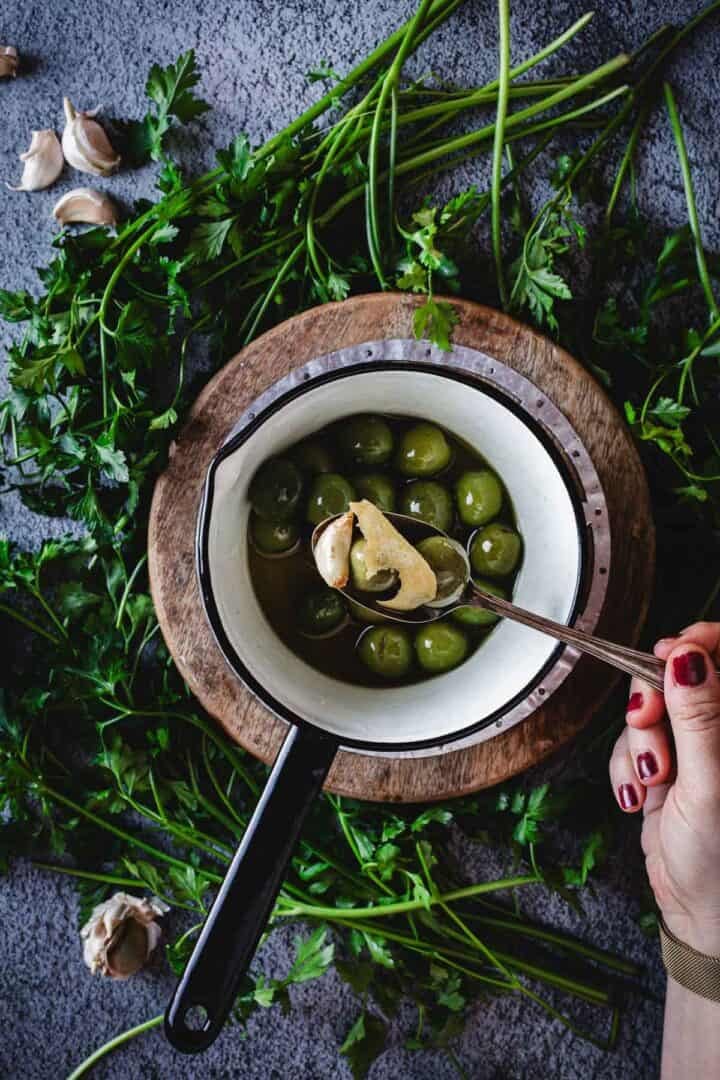
Stir in the olives and cook for another 3 to 4 minutes, tossing occasionally to coat them in the infused oil. You’re not aiming to brown them, just to soften and bring out their buttery flavor. Use a slotted spoon to remove the olives and set them aside. Keep the oil.
Assemble the Dip

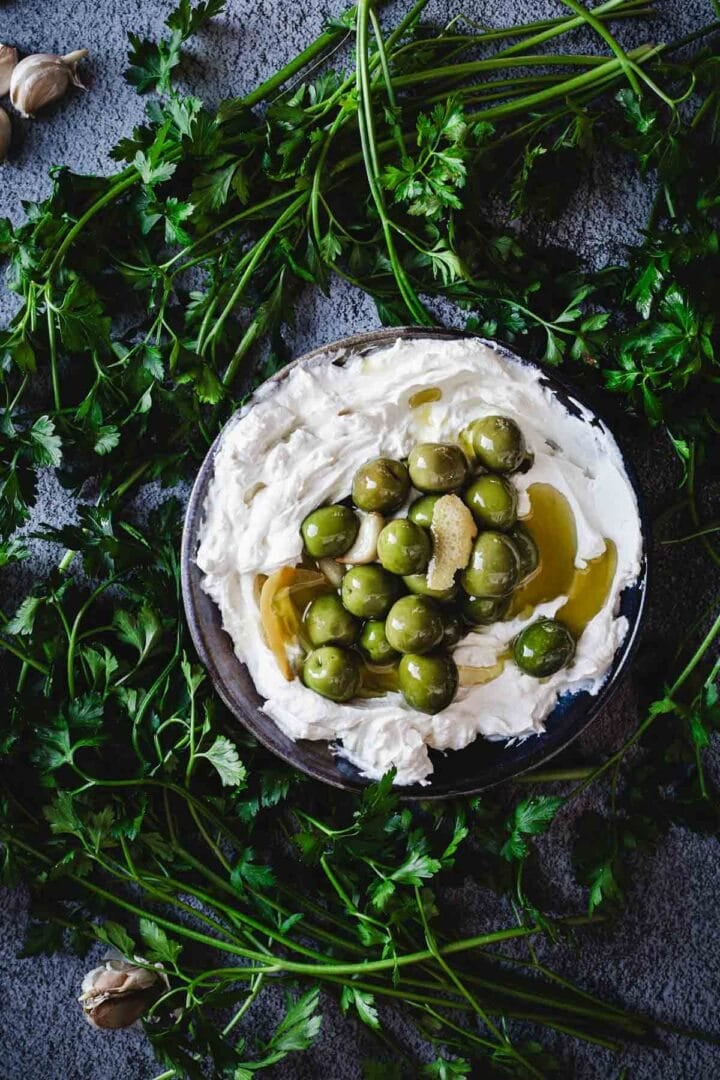
Transfer the thickened labneh to a shallow serving bowl. Use the back of a spoon to create soft swoops in the surface. Nestle the warm olives on top, scattering them evenly.
Garnish and Serve

Drizzle some of the warm lemon-garlic oil over the labneh, letting it settle into the curves. Add the garlic cloves and lemon zest as garnish. Finish with a scattering of sliced almonds, a dusting of za’atar, and a pinch of flaky sea salt. Serve at room temperature, ideally with something to scoop: pita, sourdough, or even crisp vegetables.
Storage

If you somehow manage to have any labneh dip with warmed olives left after the table’s been cleared, what I usually do is scrape the remaining labneh into a lidded glass container, and store the olives and infused oil separately in a jar. This helps everything stay fresh and keeps the almonds from softening too much.
Tucked in the fridge, the labneh will stay thick and tangy for up to 4 days. Just give the oil a quick stir or gentle reheat before using, and you’ll have a second (or third) round that tastes even more settled and comforting than the first. I don’t recommend freezing because it changes the texture.
Top Tips
Let it Strain Overnight - I’ve rushed the draining time before, thinking 4 hours would be “good enough.” It wasn’t. For that signature thick, scoopable labneh texture, a full overnight strain, 8 to 12 hours, is worth the wait. I usually tuck it into the fridge after dinner, and by morning, it’s perfect.
Use the Garlic and Zest as Garnish - don’t toss the garlic cloves or lemon zest after warming the oil, they’re little flavor bombs. I like tucking them on top of the labneh right before serving. The garlic softens into something mellow and almost sweet, and the zest adds a bright note that always makes the bowl look more finished.
Toast the Almonds, Just a Little - a quick toast in a dry pan makes a huge difference. You don’t need them dark—just golden at the edges. That little bit of crunch adds contrast to the creaminess of the dip, and it’s the texture my husband always notices first when he goes back for seconds.
Recipe
Tried and loved this recipe? Please leave a 5-star review below! Your reviews mean a lot to me, so if you've got any questions, please let me know in a comment.

Labneh Dip with Warmed Olives Recipe
Equipment
- Fine mesh strainer
- Serving bowl
Ingredients
- 1 cup plain Greek yogurt full-fat for best texture
- 1 teaspoon salt
- ½ cup olive oil
- 2 cloves garlic peeled and lightly crushed
- Zest of 1 lemon reserve a few strands for garnish
- 1 cup Castelvetrano olives pitted or whole
- 2 tablespoon sliced almonds
- Flaky sea salt to taste
- Zaatar to taste
Instructions
- Line a mesh strainer with two layers of cheesecloth and place it over a deep bowl. Add the yogurt, sprinkle in the salt, and gently fold the cloth over the top. Cover with plastic wrap and refrigerate for 8–12 hours. The yogurt will thicken into rich, tangy labneh.
- In a small skillet over medium heat, pour in the olive oil. Add the garlic and lemon zest. Let them sizzle gently for 2–3 minutes until fragrant and just golden at the edges.
- Add the olives to the skillet and stir occasionally for 3–4 minutes. They should be soft and glistening, not browned. Remove the olives and garlic with a slotted spoon and set aside. Save the infused oil.
- Spoon the thickened labneh into a shallow serving bowl. Create swoops and divots in the surface with the back of your spoon.
- Top the labneh with the warm olives, garlic, and a few strands of lemon zest. Drizzle with the infused oil. Finish with toasted sliced almonds, a sprinkle of zaatar, and flaky sea salt.




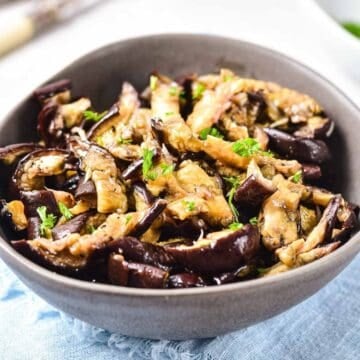
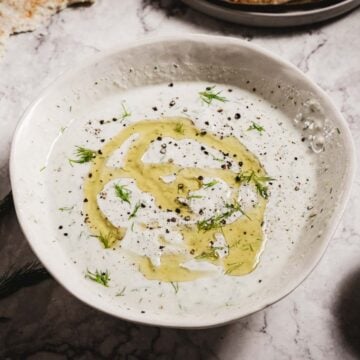
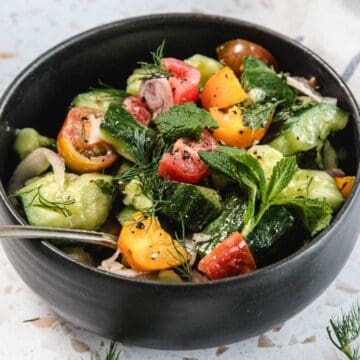
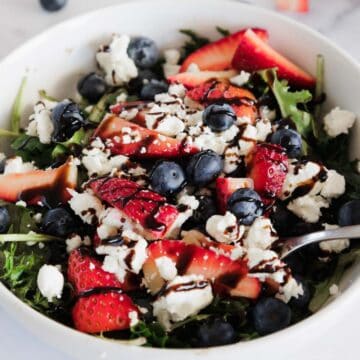
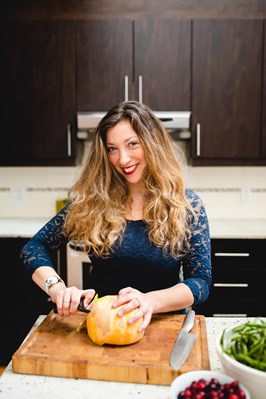
Tell Me What You Think!